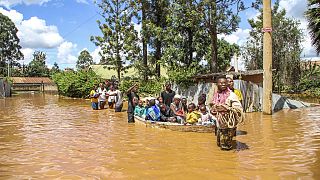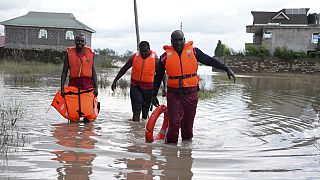Weather
There may be thousands of miles between Earth and Pluto, but it appears the two planets may just have something in common.
The American space agency NASA on Thursday released a new photo of what can best be described as Pluto’s own “Himalayas”.
The photo from NASA’s New Horizons spacecraft shows a chain of snowcapped mountains stretching across the dark section of Pluto’s Cthulhu Region.
The compositional data was obtained using the Ralph/Multispectal Visible Imaging Camera (MVIC) on July 14, 2015.
The snow-capped peaks are said to be methane ice which have condensed out of Pluto’s thin atmosphere.
Methane snow on #Pluto’s peaks possibly revealed by #PlutoFlyby data. https://t.co/xRCaLa46rM pic.twitter.com/nTcCkXRHmQ
— NASA New Horizons (@NASANewHorizons) March 3, 2016
NASA said the range is situated among craters, with narrow valleys separating its peaks and the upper slopes of the highest peaks are coated with a bright material that contrasts sharply with the dark red colour of the surrounding plains.
Cthulhu, which is slightly larger than the US state of Alaska, has a geology which exhibits a wide variety of landscapes, ranging from mountainous to smooth, to heavily cratered and fractured.
Since scientists discovered there exist other planets apart from the Earth, they have stopped at nothing in their quest to answer the question – what else is out there.
Satellites and other equipment intended to study life on the other planets continue to be launched into space.
Pluto, the last known planet in our solar system, has been described as the dwarf planet because of its size. It is estimated to be 1,400 miles wide, about half the width of the United States.
In February this year, NASA released photographs from its New Horizons spacecraft which suggested that Pluto’s moon, Charon, once had a subsurface ocean.
The space agency said the ocean would have long since frozen and expanded, pushing outward and causing the moon’s surface to stretch and fracture.











Go to video
Top 10 African countries facing record-breaking heat waves in 2023
01:05
South Africa: Johannesburg experiences rare snowfall
Go to video
2022, the hottest year in Morocco for 40 years
Go to video
Cyclone Freddy kills 7 in Madagascar, becomes a storm in Mozambique
Go to video
Madagascar, Mozambique set for "dangerous" Cyclone Freddy
Go to video
Earth tremor hits some parts of Ghana's capital Accra